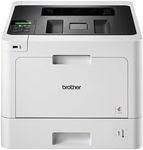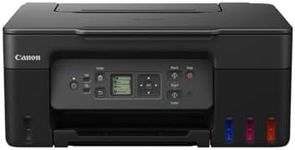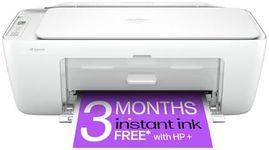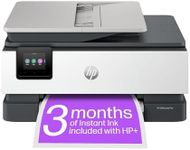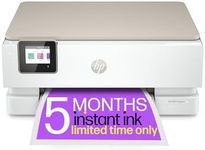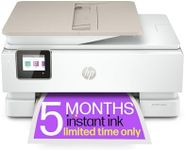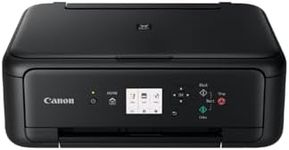Buying Guide for the Best Apple Air Printers
When choosing an AirPrint-enabled printer, it's important to consider how it will fit into your existing setup and meet your printing needs. AirPrint is a feature that allows you to print from Apple devices without needing to install additional drivers. This makes it a convenient choice for Apple users, but there are several other factors to consider to ensure you select the right printer for your needs.Print QualityPrint quality is determined by the printer's resolution, measured in dots per inch (DPI). Higher DPI means better print quality, which is important for printing detailed images or professional documents. For general home use, a DPI of 600x600 is usually sufficient. If you need to print high-quality photos or graphics, look for a printer with a DPI of 1200x1200 or higher. Consider what you will be printing most often to decide the level of print quality you need.
Print SpeedPrint speed is measured in pages per minute (PPM) and indicates how quickly a printer can produce documents. This is important if you frequently print large documents or need to print quickly. For occasional home use, a speed of 10-20 PPM is generally adequate. For office use or frequent printing, look for a printer with a speed of 20 PPM or more. Consider how often and how much you print to determine the right print speed for you.
Connectivity OptionsWhile AirPrint allows for wireless printing from Apple devices, it's also important to consider other connectivity options like USB, Ethernet, or Bluetooth. These can provide additional flexibility, especially if you have non-Apple devices or need to connect directly to a computer. If you have a mixed-device environment, look for a printer with multiple connectivity options. Think about your current and future device ecosystem when evaluating connectivity.
Paper HandlingPaper handling refers to the types and sizes of paper a printer can accommodate, as well as its paper tray capacity. This is important if you need to print on different media types like envelopes, labels, or photo paper. For basic home use, a standard tray capacity of 100-150 sheets is usually sufficient. If you print in high volumes or need to use various paper types, look for a printer with multiple trays or higher capacity. Consider your typical printing tasks to choose the right paper handling features.
Cost of ConsumablesThe cost of consumables, such as ink or toner, can significantly impact the overall cost of owning a printer. It's important to consider how often you'll need to replace these and their cost. Inkjet printers generally have lower upfront costs but higher ongoing ink costs, while laser printers have higher initial costs but lower per-page costs. Consider your printing volume and budget for consumables when choosing a printer.
Size and DesignThe size and design of a printer can affect where you can place it and how it fits into your workspace. Compact printers are ideal for small spaces, while larger models may offer more features but require more room. Consider the space you have available and whether you need a printer that can easily fit into your home or office environment. Think about where you plan to place the printer and how much space you can allocate to it.

